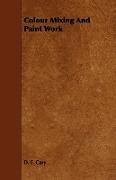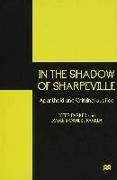- Start
- Colour Mixing and Paint Work
Colour Mixing and Paint Work
Angebote / Angebote:
PREFACE THE object of this small book is to provide a much-needed manual for painters, signwriters and decorators. It is, in fact, a handy book of reference for the practical man, the art student, and those connected in any way with paints and painting. The book will appeal alike to skilled workman and novice. A working knowledge of the mixing of paint is fully given. This is essential for the man who mixes his own paints, and it cannot fail to be of great interest to those who buy paint already mixed. The whole art and science of colour mixing has been clearly and concisely set out. Much work has been devoted to the chapters on this subject, owing to its very great importance. And, lastly, an appendix of useful tables has been added. These cannot fail to be of sterling value to the reader. During sever a1 years at Cambridge University, the writer has studied the chemistry of paints and their reactions with one another from the scientific point of view. However, no mention has been made of chemical formul, the subjectmatter being treated in such a way as to be easily understood by the lay mind.Paint is a solid powder mixed with a liquid. The solid is called the Pigment and the liquid the vehicle. It is obvious from the start that the application of a dry powder as a means of colouring is absurd and impracticable, and it is necessary to have a vehicle to bin the powder together before it can be applied. Vehicles.-The liquid generally used is linseed oil, which is obtained from flax seeds. The raw oil dries slowly, to form a hard film. Boiled oil - is oil to which a substance, known as a drier, has been added to hasten the formation of the hard film or drying. The linseed oil combines withtheoxygenof theairtoformthisfilm. The dryer, acting on the air, more readily combines with oxygen, which it afterwards imparts to the C.M. I B 2 COLOUR MIXING oil. In this way the drying of the paint is hastened. The addition of too much drier may have the effect of over-oxidation of the oil, which impairs the toughness and elasticity of the paint. Slow drying paints are the most durable, consequently it is impracticable to use much drier. Not more than 5 to 10 per cent. should be added per gallon. Drier should never be added to already mixed paints, as these are sold ready for use. Turpentine the essential oil of is often used for thinning paint on account of its properties. It is a colourless, volatile, inflammable liquid, and is lighter than water, mixing freely with oil. The effect of turpentine in paint is to produce a flat surface-that is to say, a surface that is not glossy. This effect is sometimes sought as a finish, but more often it is used as a primer coat of paint, over which the final coat is laid. Paint will stick better to this flat surface than to a shiny one. Turpentine would seem to interfere with the uniting of oil with the pigments, and for this reason it is essential that , if turpentine is to be added, it should be added after the oil and pig- ments have been mixed. I MATERIALS 3 Turpentine is more volatile, and will not bind the pigment like oil, and therefore the paint is less elastic and less durable. Benzene or petro- leum may also be used, but are not so desirable as turpentine. Driers.-Paint drier is an oxide of lead or sometimes of manganese. Both are soluble in oil. The action, as already explained, is to take up oxygen out of the air, which it imparts to the oil...
Folgt in ca. 10 Arbeitstagen




